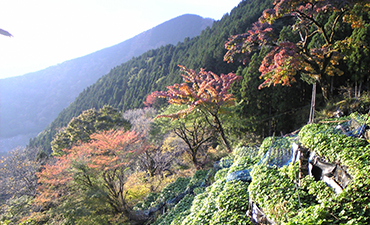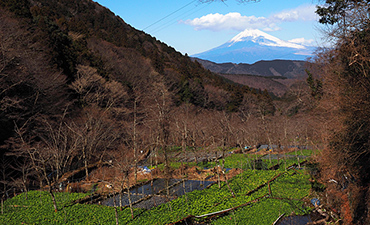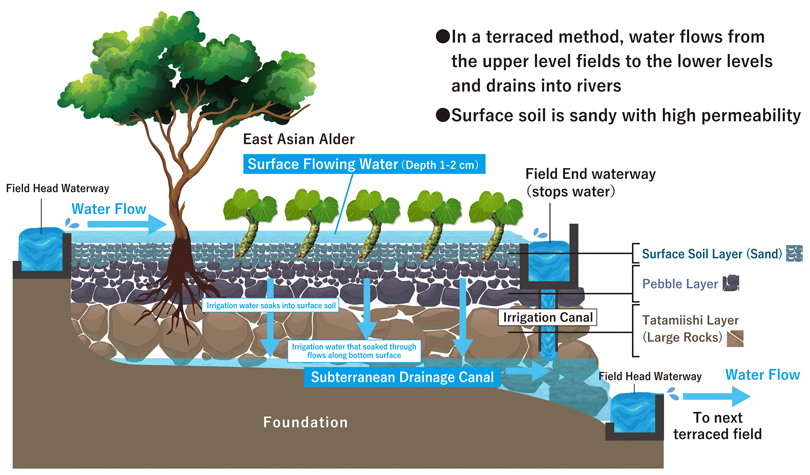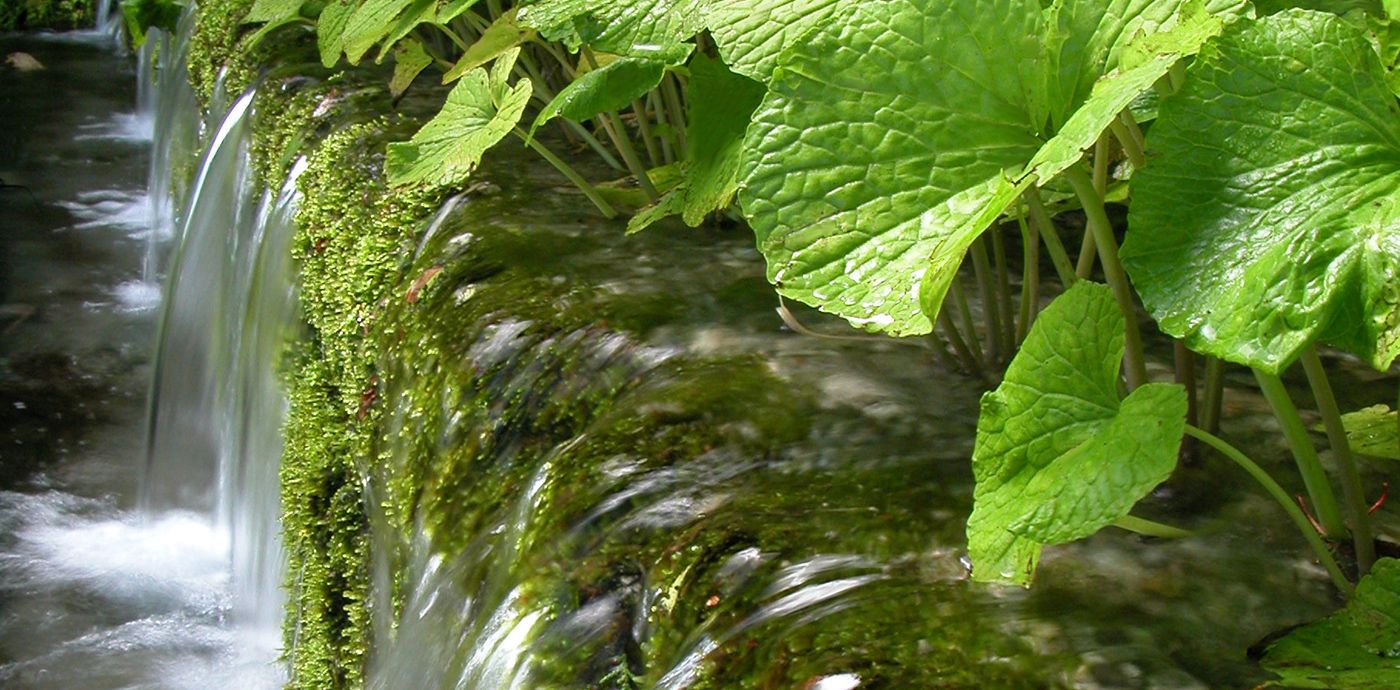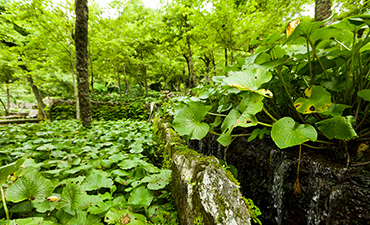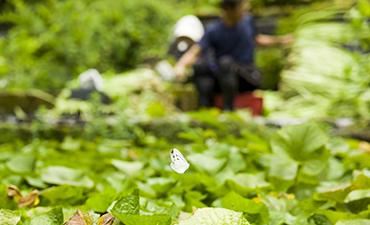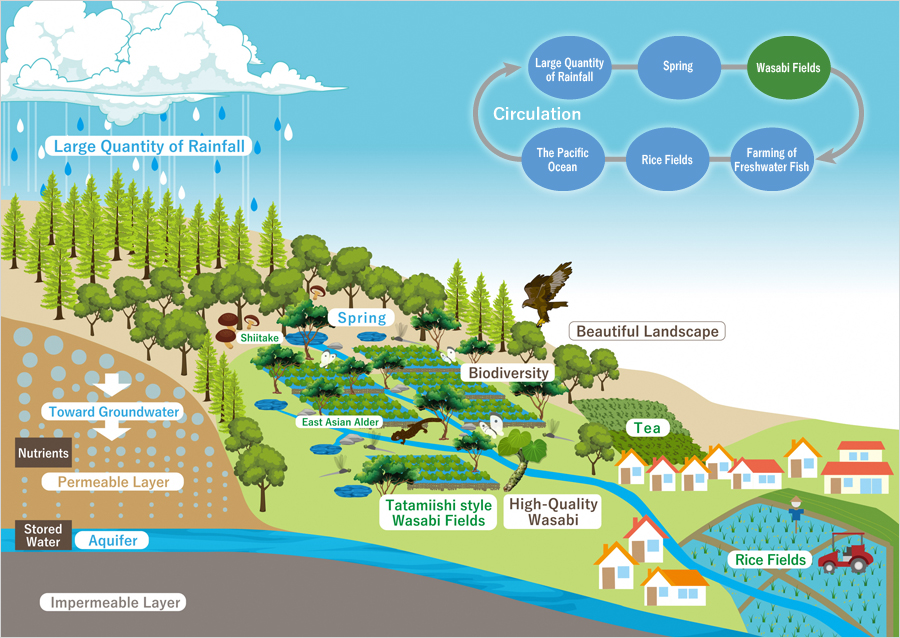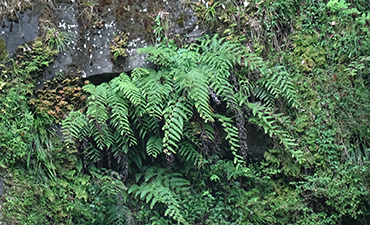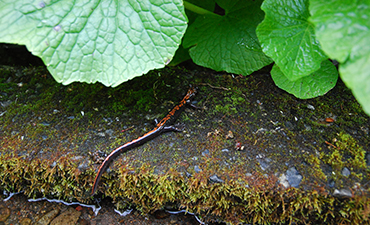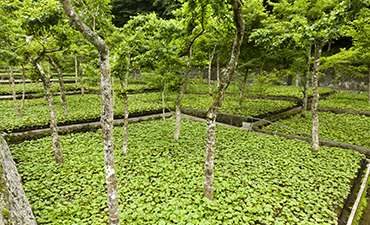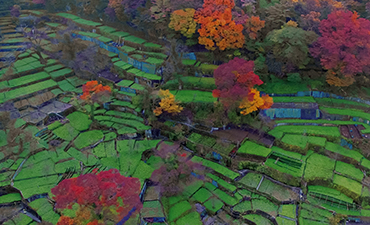Shizuoka Prefecture – Japan's Top Producing Region
Situated at the foot of Mt. Fuji, Shizuoka is blessed with a mild climate and natural abundance, allowing for year-round production of a great variety of agricultural products, one of which is wasabi.
The wasabi growing region of Shizuoka is the top wasabi producing region in Japan thanks to its ideal growing conditions created from a combination of heavy precipitation and robust soil, features that allow for a year-round abundance of spring water. Moreover, the wasabi cultivated in Shizuoka has exceptionally thick roots, giving it high market value as well as a reputation for being the highest quality wasabi in Japan, a fact that is reflected in its consistent showing at the top spot in nationwide competitive exhibitions each year.
The impressive yield and quality that Shizuoka has maintained ever since it first introduced wasabi cultivation, is clearly the result of many people's hard work and ingenuity over the centuries. Thus, Shizuoka wasabi can be described as the product of abundant, clear streams combined with human intellect.



